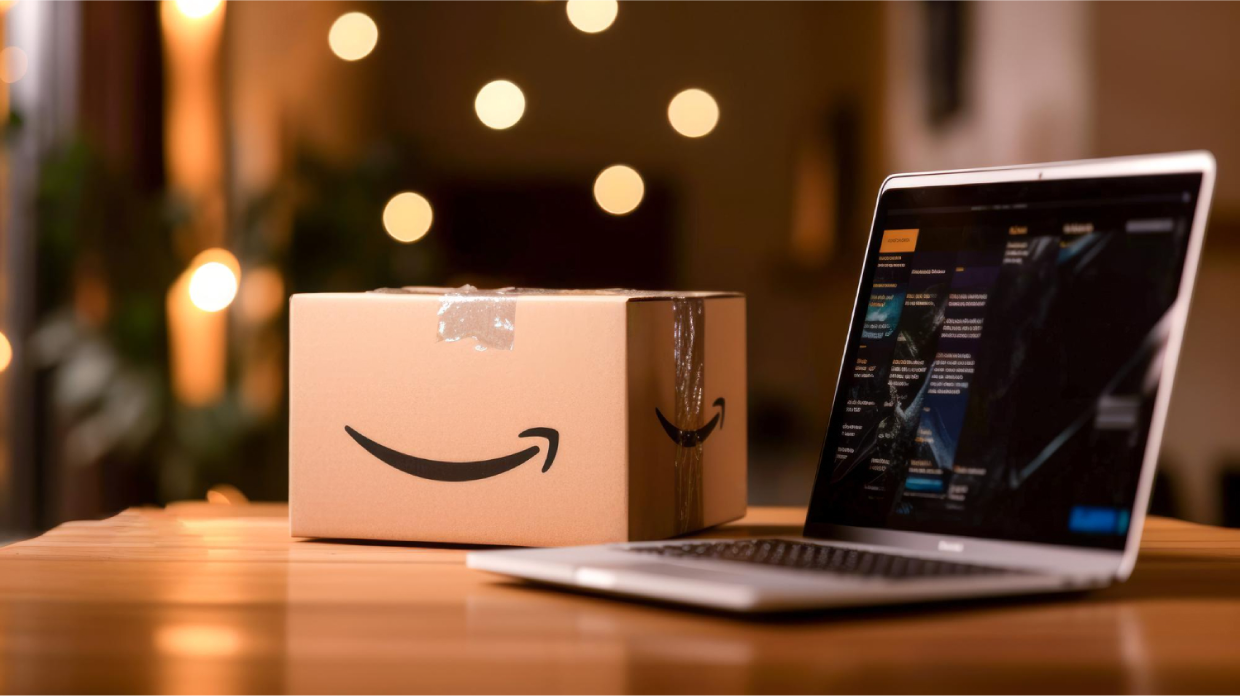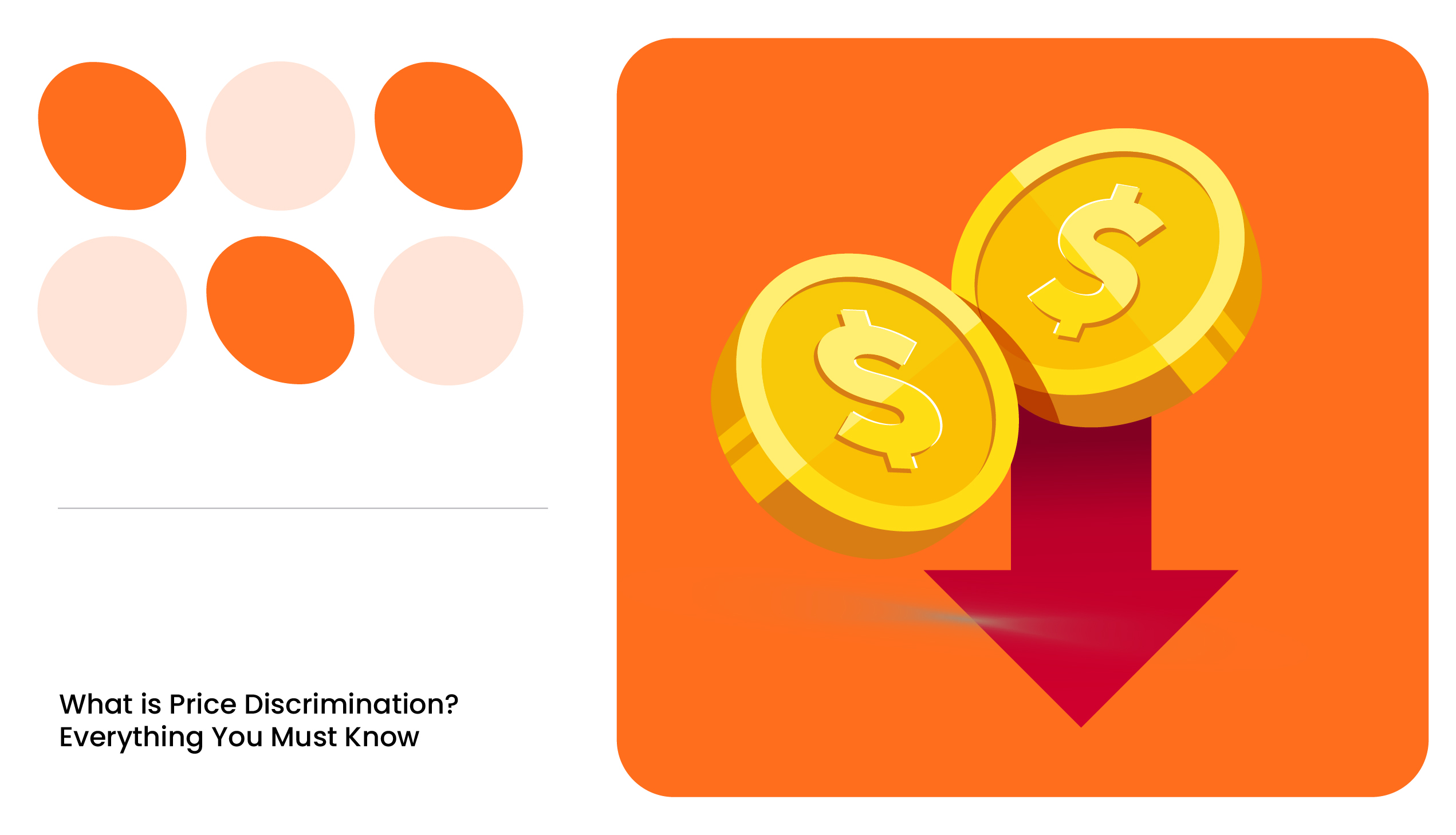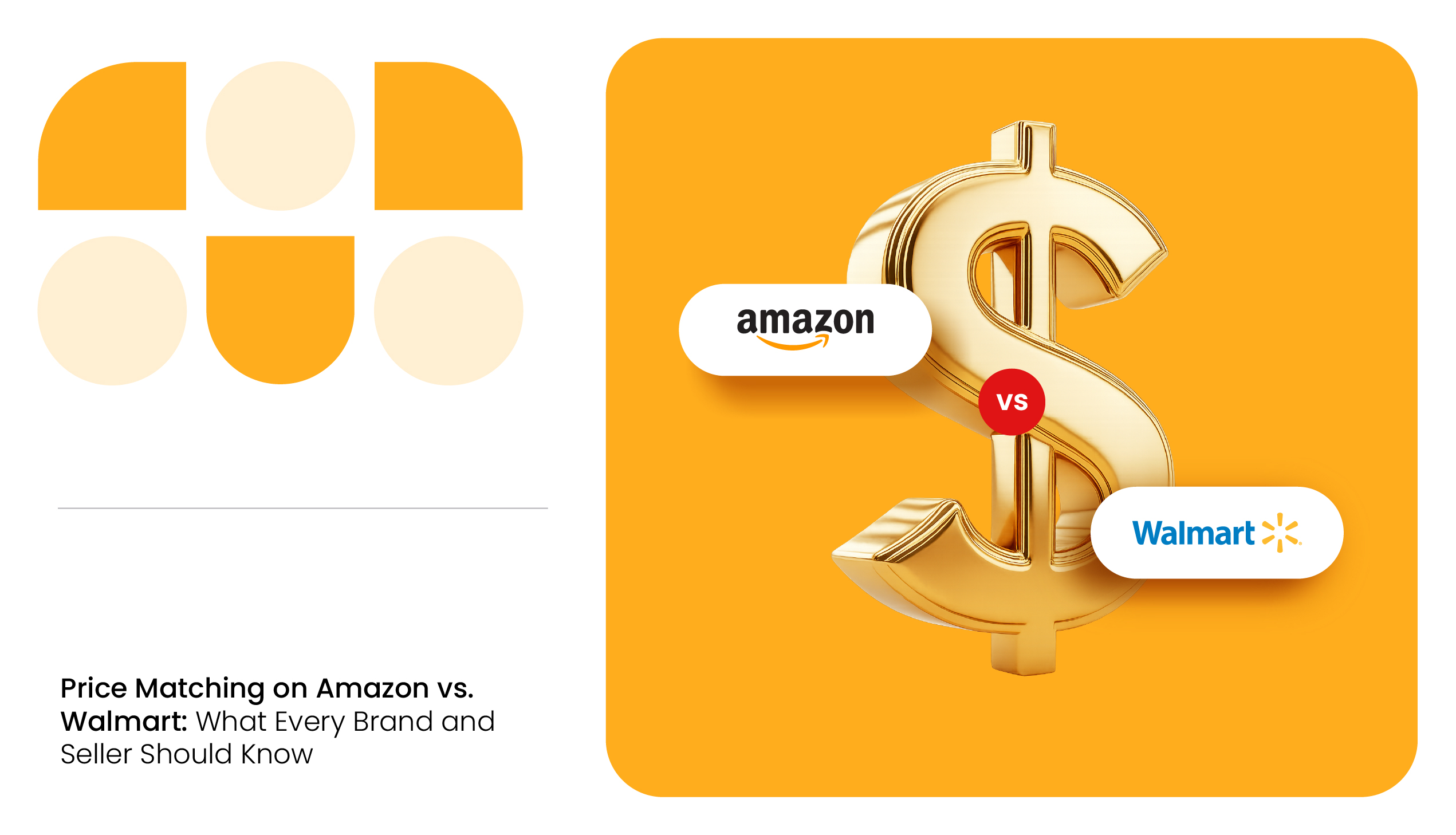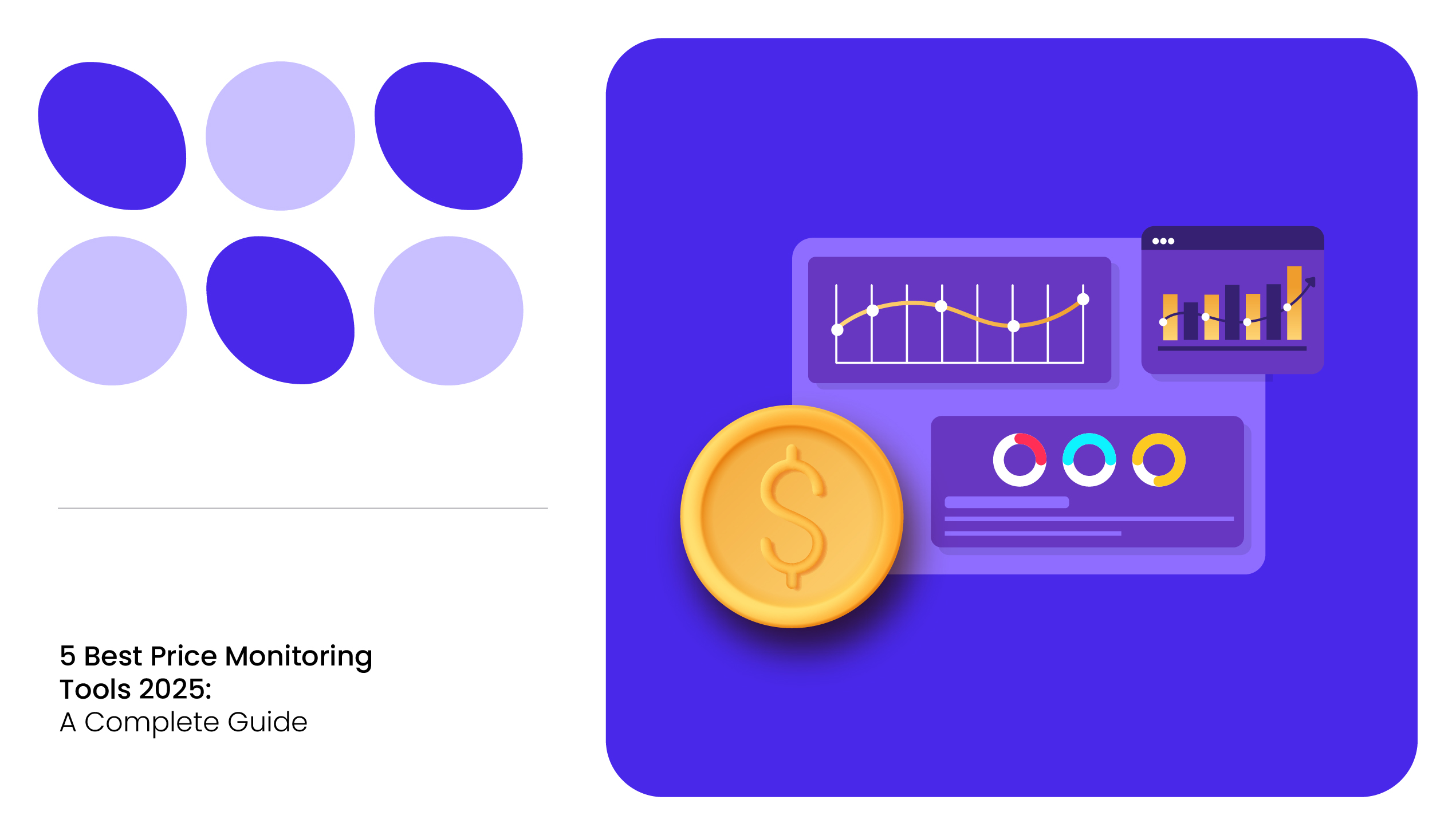According to Statista estimates, Amazon claimed the top spot among online retailers in the US in 2023, securing 37.6% of the market.
In order to remain the top online marketplace, Amazon has a consistent customer-centric approach and competitive pricing. In fact, they have created unique algorithms, processes, and technology to ensure that clients receive high-quality products at low prices.
As a seller on Amazon, it is essential to understand Amazon pricing strategy to optimize pricing and increase sales.
What is Amazon’s Pricing Strategy?
Amazon’s pricing strategy is to keep the prices on its platform as low as possible so that customers can revisit their site for all their online purchases. It uses Machine Learning (ML) algorithms to monitor and adjust product prices based on competition and market demand.’
Therefore, sellers must understand Amazon’s pricing strategies in order to remain profitable in the competitive landscape.
Impact of Amazon History Price Data on Pricing Strategy
Amazon’s history price refers to the historical data of a product’s prices on Amazon. It records cost variations of an item over a specific period, which can be days, months, or even years. It includes price fluctuations due to seasonal changes, sale events, demand shifts, etc. It helps sellers analyze pricing trends, market fluctuations, customer buying behavior, etc.
In addition, it informs the sellers about their Amazon pricing strategies and how they stand amidst competition. By analyzing the pricing changes over time, Amazon sellers can accurately forecast future pricing trends and make intelligent business decisions.
Does Amazon Offer Price Matching?
Price matching is when the seller reduces the product’s price if a competitor has also decreased the price of the same product. As the top e-commerce platform, the question is whether price matching is part of Amazon’s pricing strategy.
However, the answer is No. In fact, Amazon states: “We constantly compare Amazon’s prices to our competitors’ prices to make sure that our prices are as low or lower than all relevant competitors. As a result, we don’t offer price matching.”
Amazon Pricing Strategies
Amazon leverages advanced technologies and algorithms to implement its unique pricing strategies. Here are some of Amazon’s key pricing strategies that sellers can consider.
Dynamic Pricing
In a marketplace like Amazon, where multiple sellers can sell the same product and customers can easily compare prices, there is a very low chance that buyers will purchase higher-priced products.
In such a scenario, sellers can adopt a dynamic pricing strategy on Amazon to stay ahead of the competition and drive sales. They can use a price monitoring system to track competitor pricing, market trends, etc., and adjust prices accordingly. It also enables brands to win the Buy Box since it allows them to undercut competitors by offering a lower product price.
To prevent revenue loss through rapid price reduction, sellers can determine the highest and lowest product prices and adjust them within this margin to match competitor pricing.
READ MORE | Want to implement a dynamic pricing strategy for your business? Check out Dynamic Pricing in E-Commerce: Strategies and Insights
Rule-based Repricing Strategy
Rule-based repricing offers sellers a hands-on approach to adjusting prices in response to competitors. In this method, online sellers establish pricing rules based on various scenarios and factors to modify prices accordingly. It enables sellers to adjust prices higher, lower, or match competitors.
Here, brands can configure the minimum and maximum product price, set the competitors, establish the product that needs to be repriced, etc.
Some of the common Amazon repricing rules include:
- Competitive Featured Offer: Allows brands to set the listing price below, match, or above the Buy Box offer.
- Competitive Lowest Price: Helps set the listing price below, match, or above the lowest price.
- Based on Sales Units: Enables brands to decrease the listing price based on the sales volume target they select within a specific period.
The rule-based repricing method is ideal for Amazon sellers who have no time to adjust their listing prices manually and aim to win more buy boxes.
Algorithmic Repricing Strategy
Algorithmic repricing is one of the advanced repricing strategies sellers can leverage on Amazon. This technique uses self-learning algorithms and historical data to analyze several factors to set the optimal price for a particular product. This might not be the lowest price, but will enable sellers to win the buy box.
In this model, the algorithms analyze past competitor data like price changes, Buy Box wins, etc., to forecast competitor future prices. In addition, it also considers price fluctuations, seller metrics, and overall market conditions to generate an expected profit under the current market and determine a price.
This model is more suitable for sellers with a large inventory in a highly competitive Amazon landscape. It will help to adapt to competition quickly, reduce manual errors, and improve profit margins.
A/B Price Tests
A/B price test or split testing is the process of experimenting with different pricing strategies for Amazon to identify the optimal price that enhances profitability and sales. Here, the seller would adopt various strategies and run them through a specific period separately to determine the best performance.
Amazon Pricing Labs conducts various online A/B experiments to evaluate new pricing policies. One such experiment is the time-bound experiment, where they tested the pricing of a range of products over 14 days.
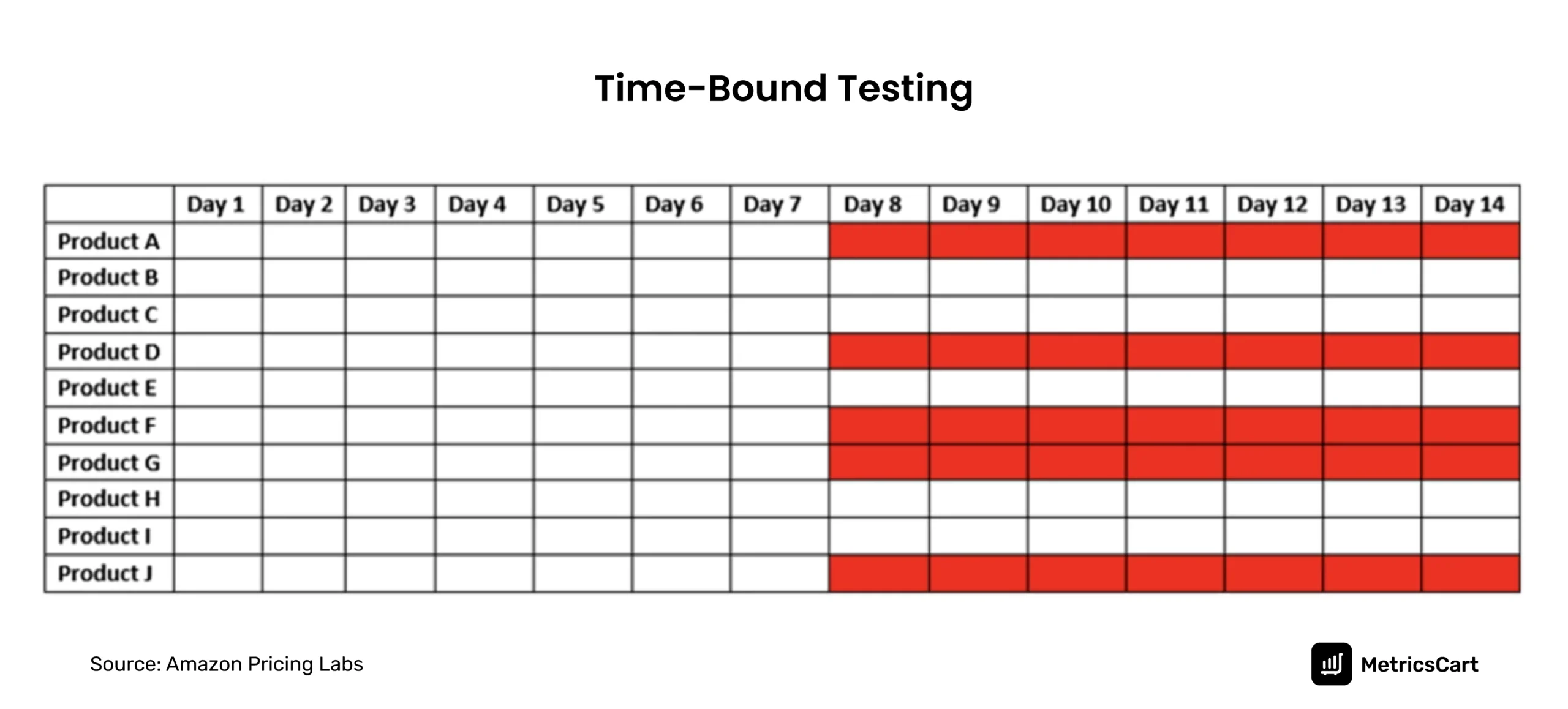
Another Amazon seller pricing strategy analysis is trigger-based testing, where they start the testing based on external interventions like product discounts in a different store.
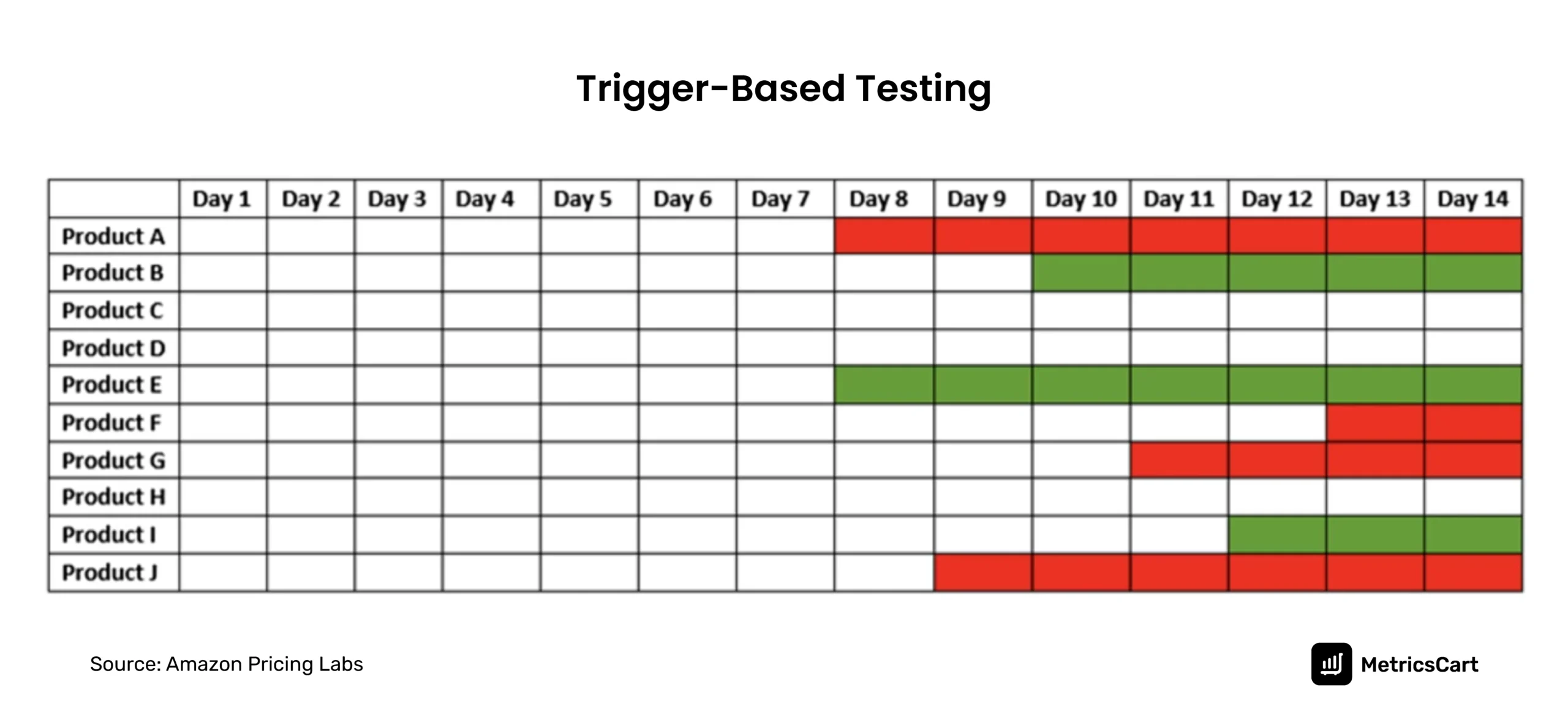
Thus, by adopting a data-driven approach to analyze various pricing strategies, sellers can gain insights into how customers react to price changes over time.
Tips for Effective Product Pricing on Amazon
Enlisted below are some additional tips to price products effectively on Amazon:
- Monitor competitor pricing and market trends regularly
- Implement a Minimum Advertised Price Policy (MAP) to avoid revenue loss
- Adopt a suitable e-commerce pricing strategy that fits your business needs
- Leverage penetration pricing strategy for new products to gain more visibility
- Offer bundle pricing and discount coupons for customers to improve sales
Final Thoughts
Amazon is a highly competitive e-commerce marketplace with millions of products sold daily. With many sellers on the platform, there is no one-size-fits-all approach to becoming one of the top sellers.
Amazon sellers must select a suitable pricing strategy for their business needs. Leverage a price monitoring solution to gain real-time insights into price changes and adopt a suitable Amazon pricing strategy. Contact us now to accelerate your Amazon business today.

